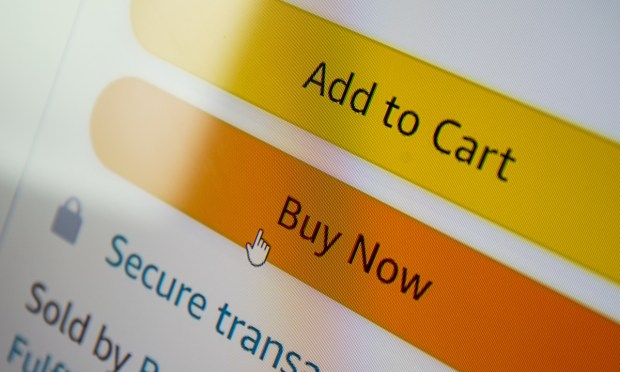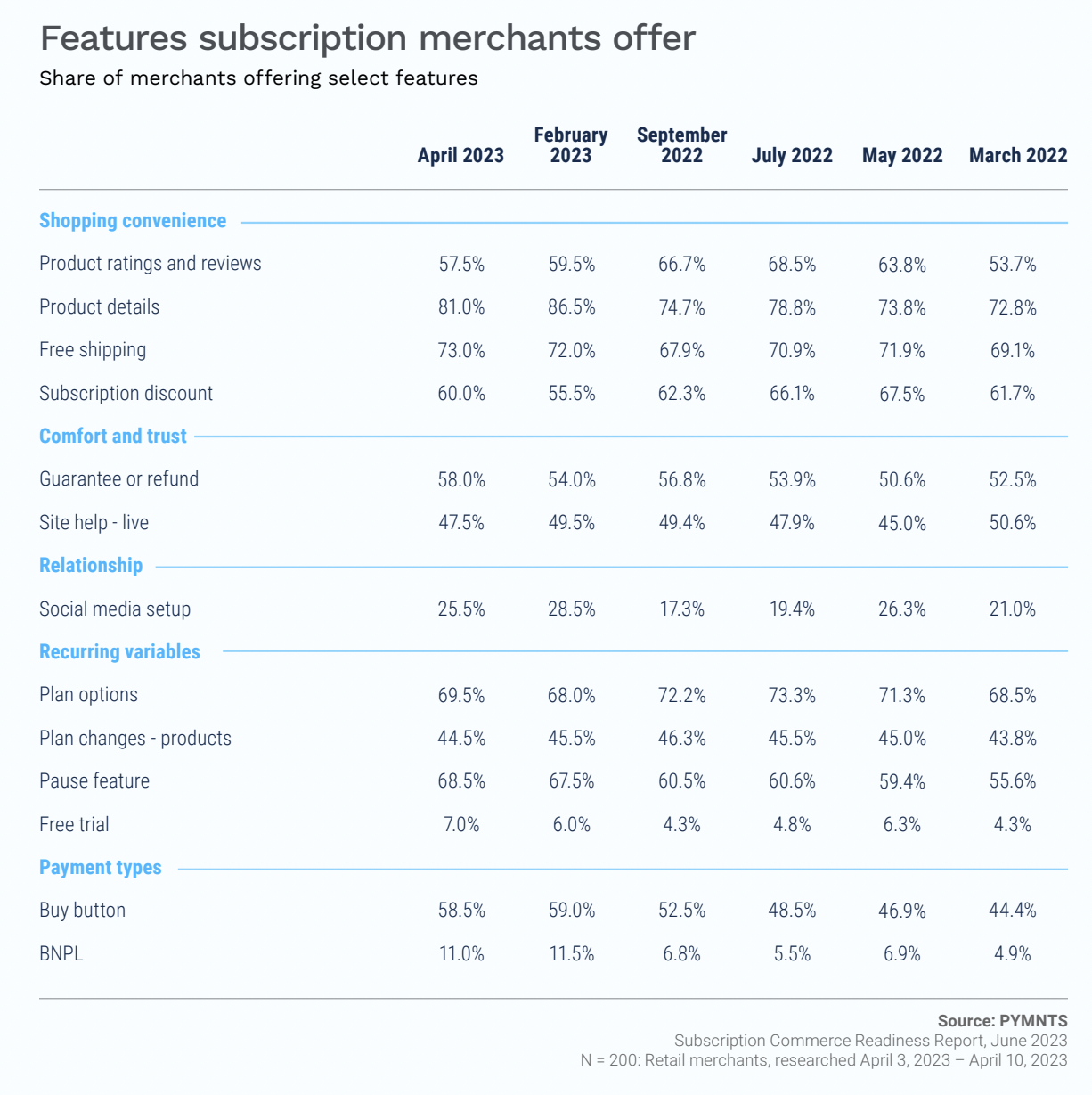6 in 10 Subscription Merchants Drive Conversion With ‘Buy Buttons’

As subscription merchants look to reduce transaction friction to increase conversion, the majority now offer “buy buttons.”

By the Numbers
The study “The Subscription Commerce Readiness Report: The Loyalty Factor,” a PYMNTS Intelligence and sticky.io collaboration, was based on a survey of 200 subscription commerce providers across nine industries. The goal was to gain insights into the state of the subscription commerce space in terms of feature implementation, sign-up and conversion.
The results revealed that as of April, 59% of merchants offered buy buttons — shortcuts to checking out via a payment platform that jump past the typical “add-to-cart” and manual payment information steps. This share was up from 44% in March 2022.
A Deeper Dive
Buy buttons can go a long way toward reducing transaction friction and, in turn, boosting conversion. According to PYMNTS Intelligence’s study last year, “2022 Buy Button: Accelerating Checkout Optimization,” which drew from a survey of more than 800 eCommerce retailers across 17 industry segments, completing online checkouts with a buy button takes 46% less time than when not using one. The figure amounts to saving U.S. consumers an aggregate of 148 million hours per year.
Plus, consumers have more choices today when it comes to one-click checkout buttons than they did in the past.
“Consumers can choose from multiple ‘buy button’ or wallet options each time they visit a merchant checkout page,” PYMNTS’ Karen Webster observed in a Monday (Dec. 18) feature. “What used to look like a jumbled-up Nascar page a few years back is more organized today, and not as off-putting or confusing.”
Granted, reducing checkout friction is only one piece of the puzzle when it comes to driving consumers’ lifetime spending. After all, a quick checkout experience may contribute positively to conversion, but it has little benefit for long-term loyalty.
“Every brand should be focused on conversion, but they also should be focused on average order value and [customer] lifetime value,” Bold Commerce CEO Peter Karpas told Webster in a conversation over the summer.

